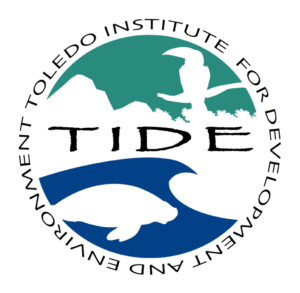TIDE’s first Ridge to Reef expedition group had the incredible experience of tagging a critically endangered hawksbill sea turtle on 23rd August 2014! She was named TIDE of HOPE in honour of the Hawksbill Hope project with Marymount University who supplied the tag. She has provided important migration data for sea turtles that nest in the Port Honduras Marine Reserve. This is enabling us to highlight the importance of the coastal beaches and foraging areas for endangered sea turtles in and around PHMR, and determine connectivity with other areas in the region. After her tagging, TIDE of HOPE stayed within and around Port Honduras Marine Reserve (PHMR) for 2 weeks before moving across the Bay of Honduras past Guatemala and along the Honduran coastline south west of the island of Utila. Comparison with regional coral layers from the Healthy Reefs Initiative geoportal have revealed that TIDE of HOPE relies upon a small reef bank near the coast at Cuero y Salado National Park in Honduras, and TIDE is now working with Prolansate in Honduras to investigate this little known unprotected reef.
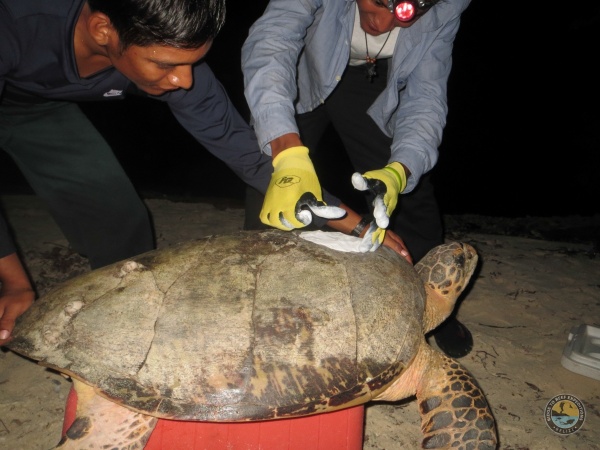
The tagging itself took 3 hours and finished at 5 am. We wish to thank to Dr. Todd Rimkus, Marymount University and the Hawksbill Hope project for leading this important project and providing the tag and for Ecomar to facilitate the effort in Belize! Several of the turtles that nest at Gales Point forage in Port Honduras so we know there already exists this connectivity. TIDE of HOPE now has demonstrated regional connectivity between PHMR and Punta Sal National Park in Honduras managed by one of TIDE’s partnering organisations Prolansate. This highlights the need for holistic regional scale management of marine environments. We are all excited to follow TIDE of HOPE’s progress over the coming months and look forward to being present as her hatchlings appear.
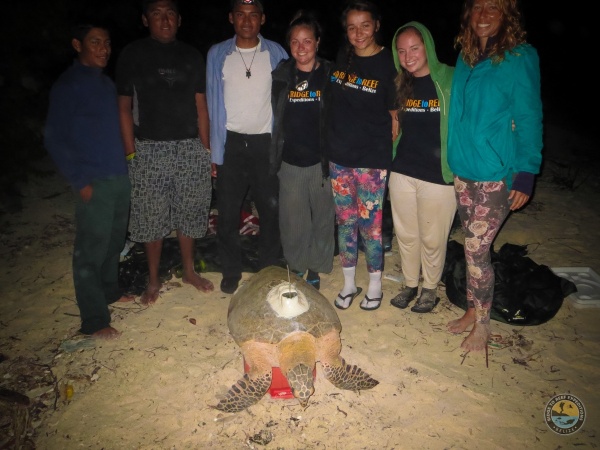
TIDE also has an ongoing sea turtle monitoring project whereby community researchers conduct monthly beach profiling to monitor the status of turtle nesting habitat. Based on rates of beach erosion, we know which areas to monitor more closely to protect turtles. For example, include Punta Ycacos, Punta Negra, Brion Point, South and West Snake Caye are all favored nesting sites for endangered marine turtles. On three occasions we collected hatchlings as they appeared and released them en masse in their original locations at night to minimise predation and maximise survivorship.
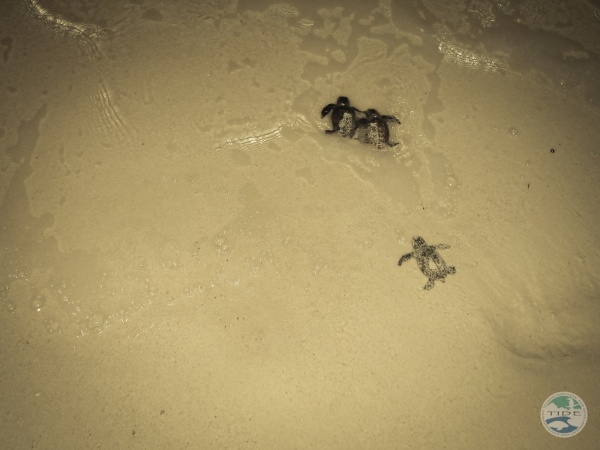
You can view TIDE of HOPE’s progress by following this link.
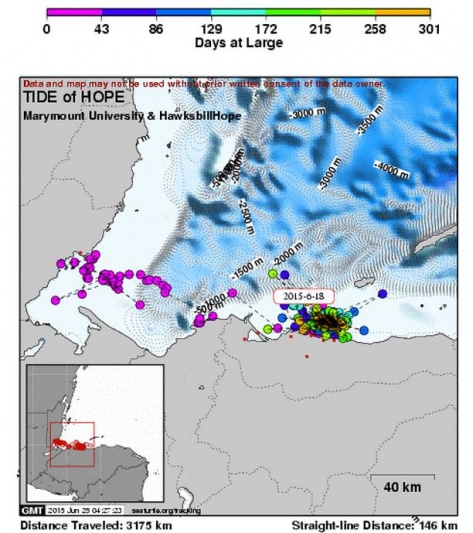
Above: Final map showing 301 days of TIDE of HOPE’s movements
After 3 weeks of not receiving any data, we conclude that TIDE of HOPE’s journey has finally come to an end. Final transmission was received 18th June 2015. Although we cannot conclude to reasons for failure of transmission, we have successfully gathered 301 days of movement of data from this IUCN listed Critically Endangered species (a huge success!). Through this research, we have shown that this turtle resides throughout the year on a reef bank currently not under protection a few miles off the north coast of Honduras near Tela, and probably uses the Snake Cayes of Port Honduras Marine Reserve to nest annually.
TIDE tagged a second Hawksbill Turtle on 25th August 2015 after it nested on West Snake Caye! The second tag was applied by members of TIDE’s Community Researcher team, led by Marine Biologist Tanya Barona. This tagging was also part of the Hawksbill Hope project and made possible by Dr. Rimkus of Marymount University and Linda Searle of ECOMAR. The turtle was named Tide of Hope II. Since being tagged, Tide of Hope II has traveled along the coast into Honduras and then back up the coast of Belize, as far north as Ambergris Caye, before turning southeast and heading towards Lighthouse Reef, then back towards shore to her last known location just south of Belize City. You can track her latest movements by visiting the Hawksbill Hope satellite tracking page.
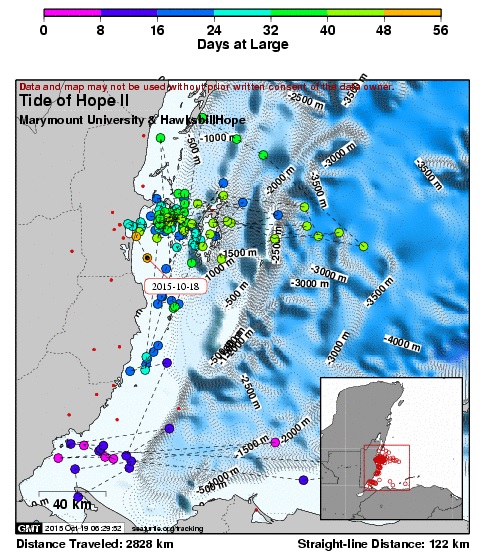
Satellite map tracking Tide of Hope II’s movements since being tagged 25th August, 2015, up until 18th October, 2015
The information we have learned from TIDE of HOPE and what we are now learning from Tide of Hope II are already helping to strengthen management conservation efforts for Hawksbill turtles at the regional scale, having demonstrated interconnectivity between habitats in Belize and Honduras. Through collaborations with organizatons in Honduras, we will continue to share information through our networks to strengthen regional capacity to protect Hawksbill turtles.
A big congratulations and thank you to everyone who has made this tagging program a success: the 2014 Ridge to Reef volunteers, TIDE’s Community Researcher team, Dr. Rimkus of Marymount University in the U.S., and Ecomar in Belize City for supplying us with the tags to continue this research!
Let’s tag some more turtles!
